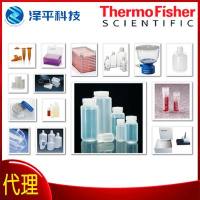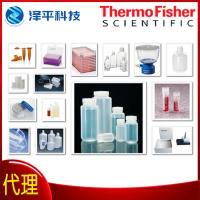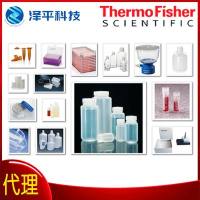In Silico Drug Exploration and Discovery Using DrugBank
互联网
- Abstract
- Table of Contents
- Figures
- Literature Cited
Abstract
DrugBank is a fully curated drug and drug target database that contains information on nearly 5000 drugs, including >1200 FDA?approved small molecule and biotech drugs as well as >3200 experimental drugs. Additionally, more than 14,000 protein or drug target sequences are linked to these drug entries. DrugBank is primarily focused on providing both the query/search tools and the biophysical data needed to facilitate drug discovery and drug development. This unit provides readers with a detailed description of how to effectively use the DrugBank database and how to navigate through the DrugBank Web site. It also provides specific examples of how to find chemical homologs of potential drug leads and how to identify potential drug targets from newly sequenced pathogens. The intent of this unit is to give readers some introduction into the field of cheminformatics (the study of chemical information) and to show how cheminformatics can be seamlessly integrated into the field of bioinformatics.
Keywords: Database; bioinformatics; drug; chemical; drug target
Table of Contents
- Basic Protocol 1: Navigating the DrugBank Web Site
- Basic Protocol 2: Chemical Structure Similarity Searching
- Basic Protocol 3: In Silico Drug Target Identification
- Guidelines for Understanding Results
- Commentary
- Literature Cited
- Figures
- Tables
Materials
Figures
-

Figure 14.4.1 Screen shot of the DrugBank home page. At the top of the page is a menu bar (blue on screen) containing eight menu choices (in white). Users can navigate through DrugBank using this menu bar. Details of how to use, contact, and reference DrugBank are given in the central text window. View Image -

Figure 14.4.2 A screen shot of a Search DrugBank for query output for the word “tricyclic.” The drug names on the left side of the table are hyperlinked. View Image -

Figure 14.4.3 A screen shot of the DrugCard for desipramine, a tricyclic antidepressant. View Image -

Figure 14.4.4 A 2‐D image of the structure of desipramine as displayed using the ChemSketch Java applet. The image may be manipulated for different display purposes. View Image -

Figure 14.4.5 An image of the 3‐D structure of desipramine as displayed using the WebMol Java applet. Users may manipulate the image for better viewing or further analysis. View Image -

Figure 14.4.6 Details of the SNP (single nucleotide polymorphism) drug target information contained in the DrugCard for desipramine. View Image -

Figure 14.4.7 A screen shot of the DrugBank Browser. Note the tabular format and the sorting/display tools at the top of the Browser page. View Image -

Figure 14.4.8 A screen shot of the DrugBank Browser set to display biotech (i.e., protein) drugs. View Image -

Figure 14.4.9 A screen shot of the DrugBank Browser set to display biotech drugs sorted by molecule weight (from smallest to largest). View Image -

Figure 14.4.10 A screen shot of the PharmaBrowse browsing/navigation page. Note the hyperlinked list of drug categories and general indications. View Image -

Figure 14.4.11 A screen shot of the Text Query window. This permits more complex text queries than what is available through the default Search tool. View Image -

Figure 14.4.12 A screen shot of the Data Extractor window. The Data Extractor supports advanced SQL‐like searches through many different data fields. View Image -

Figure 14.4.13 A screen shot of the Data Extractor query window. Users are required to fill in the text boxes using the suggested characters or formats. View Image -

Figure 14.4.14 A screen shot of the output from a Data Extractor Query aimed at finding all drugs less than 300 Da with LogPs between 3.4 and 4.2 that are antidepressants. View Image -

Figure 14.4.15 A screen shot of DrugBank's Download page. View Image -

Figure 14.4.16 A screen shot of the ChemQuery window with the ACD ChemSketch Java applet at the center. This is where the query chemical structures can be drawn. View Image -

Figure 14.4.17 A screen shot of the ChemSketch applet with the template library window placed above the drawing palette. View Image -

Figure 14.4.18 A screen shot of the ChemSketch applet with a heptacyclic ring placed at the center of the palette. View Image -

Figure 14.4.19 A screen shot of the partially completed tricyclic structure of the sea snail product. View Image -

Figure 14.4.20 A screen shot of the complete chemical structure of the sea snail product. This is the query structure used by ChemQuery. View Image -

Figure 14.4.21 A screen shot of the MOL file generated by the ChemQuery conversion utility. View Image -

Figure 14.4.22 A screen shot of the similar structures found using the ChemQuery search tool. View Image -

Figure 14.4.23 A screen shot of the table generated when the Search for Similar Structures button is pressed for desipramine. View Image -

Figure 14.4.24 A screen shot of the SeqSearch window. Note the standard BLAST query interface. View Image -

Figure 14.4.25 A screen shot of the Web site listing the 16 protein sequences for the newly sequenced retrovirus. View Image -

Figure 14.4.26 A screen shot of the SeqSearch window with all 16 retroviral protein sequences pasted into the text box. View Image -

Figure 14.4.27 A screen shot of the SeqSearch output for the second sequence (Sequence 2) in the retroviral proteome. Note the drug names and hyperlinks in the output. View Image
Videos
Literature Cited
| Bairoch, A., Apweiler. R., Wu, C.H., Barker, W.C., Boeckmann, B., Ferro, S., Gasteiger, E., Huang, H., Lopez, R., Magrane, M., Martin, M.J., Natale, D.A., O'Donovan, C., Redaschi, N., and Yeh, L.S. 2005. The Universal Protein Resource (UniProt). Nucl. Acids Res. 33:D154‐D159. | |
| Bateman, A., Coin, L., Durbin, R., Finn, R.D., Hollich, V., Griffiths‐Jones, S., Khanna, A., Marshall, M., Moxon, S., Sonnhammer, E.L., Studholme, D.J., Yeats, C., and Eddy, S.R. 2004. The Pfam protein families database. Nucl. Acids Res. 32:D138‐D141. | |
| Brooksbank, C., Cameron, G., and Thornton, J. 2005. The European Bioinformatics Institute's data resources: Towards systems biology. Nucl. Acids Res. 33:D46‐D53. | |
| Chen, X., Ji, Z.L., and Chen, Y.Z. 2002. TTD: Therapeutic Target Database. Nucl. Acids Res. 30:412‐415. | |
| Halgren, T.A., Murphy, R.B., Friesner, R.A., Beard, H.S., Frye, L.L., Pollard, W.T., and Banks, J.L. 2004. Glide: A new approach for rapid, accurate docking and scoring. 2. Enrichment factors in database screening. J. Med. Chem. 47:1750‐1709. | |
| Hatfield, C.L., May, S.K., and Markoff, J.S. 1999. Quality of consumer drug information provided by four Web sites. Am. J. Health Syst. Pharm. 56:2308‐2311. | |
| Hewett, M., Oliver, D.E., Rubin, D.L., Easton, K.L., Stuart, J.M., Altman, R.B., and Klein, T.E. 2002. PharmGKB: The Pharmacogenetics Knowledge Base. Nucl. Acids Res. 30:163‐165. | |
| Hulo, N., Sigrist, C.J., Le Saux, V., Langendijk‐Genevaux, P.S., Bordoli, L., Gattiker, A., De Castro, E., Bucher, P., and Bairoch, A. 2004. Recent improvements to the PROSITE database. Nucl. Acids Res. 32:D134‐D137. | |
| Kanehisa, M., Goto, S., Kawashima, S., Okuno, Y., and Hattori, M. 2004. The KEGG resource for deciphering the genome. Nucl. Acids Res. 32:D277‐D280. | |
| Kramer, B., Rarey, M., and Lengauer, T. 1997. CASP2 experiences with docking flexible ligands using FlexX. Proteins 1:221‐225. | |
| Krogh, A., Larsson, B., von Heijne, G., and Sonnhammer, E.L. 2001. Predicting transmembrane protein topology with a hidden Markov model: Application to complete genomes. J. Mol. Biol. 305:567‐580. | |
| Manber, U. and Bigot, P. 1997. USENIX Symposium on Internet Technologies and Systems (NSITS'97), Monterey, Calif., pp. 231‐239. | |
| McGuffin, L.J., Bryson, K., and Jones, D.T. 2000. The PSIPRED protein structure prediction server. Bioinformatics 16:404‐405. | |
| Montgomerie, S., Sundararaj, S., Gallin, W.J., and Wishart, D.S. 2006. Improving the accuracy of protein secondary structure prediction using structural alignment. BMC Bioinformatics 7:301‐312. | |
| Orth, A.P., Batalov, S., Perrone, M., and Chanda, S.K. 2004. The promise of genomics to identify novel therapeutic targets. Expert Opin. Ther. Targets 8:587‐596. | |
| Rebhan, M., Chalifa‐Caspi, V., Prilusky, J., and Lancet, D. 1998. GeneCards: A novel functional genomics compendium with automated data mining and query reformulation support. Bioinformatics 14:656‐664. | |
| Sadowski, J. and Gasteiger, J. 1993. From atoms to bonds to three‐dimensional atomic coordinates: Automatic model builders. Chem. Rev. 93:2567‐2581. | |
| Weininger, D. 1988. SMILES 1. Introduction and encoding rules. J. Chem. Inf. Comput. Sci. 28:31‐38. | |
| Wheeler, D.L., Barrett, T., Benson, D.A., Bryant, S.H., Canese, K., Church, D.M., DiCuccio, M., Edgar, R., Federhen, S., Helmberg, W., Kenton, D.L., Khovayko, O., Lipman, D.J., Madden, T.L., Maglott, D.R., Ostell, J., Pontius, J.U., Pruitt, K.D., Schuler, G.D., Schriml, L.M., Sequeira, E., Sherry, S.T., Sirotkin, K., Starchenko, G., Suzek, T.O., Tatusov, R., Tatusova, T.A., Wagner, L., and Yaschenko, E. 2005. Database resources of the National Center for Biotechnology Information. Nucl. Acids Res. 33:D39‐D45. | |
| Willard, L., Ranjan, A., Zhang, H., Monzavi, H., Boyko, R.F., Sykes, B.D., and Wishart, D.S. 2003. VADAR: A web server for quantitative evaluation of protein structure quality. Nucl. Acids Res. 31:3316‐3319. | |
| Wishart, D.S., Knox, C., Guo, A., Shrivastava, S., Hassanali, M., Stothard, P., and Woolsey, J. 2006. DrugBank: A comprehensive resource for in silico drug discovery and exploration. Nucl. Acids. Res. 34:D668‐D672. | |
| Zhang, R., Ou, H.Y., and Zhang, C.T. 2004. DEG, a Database of Essential Genes. Nucl. Acids Res. 32:D271‐D272 | |
| Internet Resources | |
| http://redpoll.pharmacy.ualberta.ca/drugbank/ | |
| DrugBank Web site | |
| http://pubchem.ncbi.nlm.nih.gov/ | |
| PubChem Web site | |
| http://xin.cz3.nus.edu.sg/group/cjttd/TTD_ns.asp | |
| TTD Web site | |
| http://www.genome.jp/kegg/drug/ | |
| KEGG drug database Web site | |
| http://www.cmpharm.ucsf.edu/∼walther/webmol.html | |
| WebMol Web site | |
| http://tubic.tju.edu.cn/deg/ | |
| Database of Essential Genes |









